Nothing affects the smooth running of your tenancy more than how you set it up from the start.
Although maintenance and repairs are an inevitable part of owning a rental home, most other tenancy issues can be avoided with the proper preparation.
In fact, whenever we meet landlords in the Wilton and Salisbury area with tenancy problems, we can usually trace them back to before their tenant moved in, from marketing to referencing to handing over the keys.
With that in mind, we’ve put together all you need to attract and retain your ideal tenants, get the legals right, and protect your time and investment. So let’s take a look at:
- Getting your rental home ready to rent
- Effective property marketing
- Screening and referencing tenants
- Perfect paperwork and procedures
- Smooth check-ins and regular check-ups
Setting up a tenancy correctly is an intricate and demanding task. But with our guide, you can create a streamlined and confident process for a rewarding and remarkably smooth buy-to-let business.
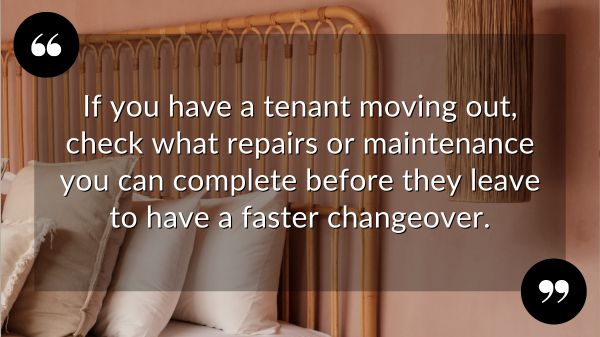
GETTING YOUR RENTAL HOME READY
Impeccable presentation is the first step in attracting high-quality tenants. By setting a strict standard for upkeep and showcasing your professional side, you'll naturally filter out the best from the rest.
- Ensure your rental home is spotless, with a professional deep clean, fresh and neutral decor, and a detailed check that all appliances are in full working order.
- Complete all essential repairs and maintenance. If your property is already occupied, see how much you can do before your existing tenant moves out to have a faster changeover.
- Maintain up-to-date certificates for gas safety, electrical installation and energy performance, along with working smoke alarms and carbon monoxide detectors where required by law.
This initial effort significantly impacts your property's value and tenant satisfaction from day one and minimises future issues by offering a safe, legally compliant, and attractive home.

EFFECTIVE PROPERTY MARKETING
Marketing rental homes has evolved, with a multi-faceted approach now essential to cover diverse tenant searching patterns. You also need to meet new Trading Standards rules around your advert.
- Utilise professional photography to showcase your property’s best features, and pair it with a compelling description that highlights all the benefits of living there.
- Choose a letting agent who lists on the major online property portals and is actively using social media in engaging and effective ways.
- Include all the material information required by Trading Standards in your online listings, including construction type, utility connections, and any potentially adverse qualities.
A carefully orchestrated promotional campaign draws in the best enquiries from the outset, ensuring your property is seen by the right people, reducing void periods, and securing a great tenant quickly.
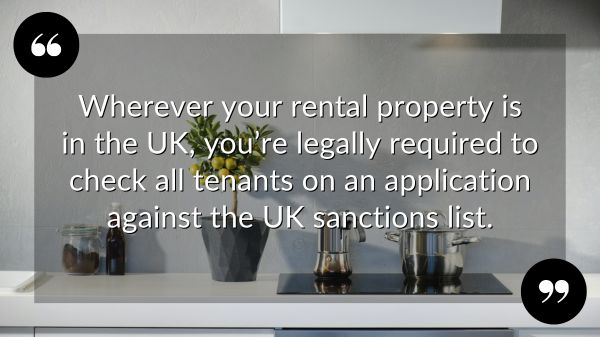
SCREENING AND REFERENCING TENANTS
No landlord wants an unsuitable or unreliable tenant, but it’s remarkable how so many have frighteningly inadequate vetting procedures in place.
There are two stages of vetting for every rental property, but the first one is almost universally ignored, with the second often performed to a surprisingly lax standard. Here's how to do it right.
- Whenever anyone asks to view, have a few questions ready about what they're looking for and whether they're a suitable fit for your property and timescale.
- After you’ve agreed a let, run credit checks on a tenant’s financial status, and get at least three months' bank statements to see how they manage their money.
- Verify employment and income to confirm a tenant's ability to meet rental payments, and approach previous landlords for their payment record and property care.
- Wherever your rental property is in the UK, you’re legally required to check all tenants on an application against the UK sanctions list, and to report anyone who appears on it.
- If your property is in England, you must also conduct Right to Rent checks for any non-UK citizens over 18 years old to confirm they have leave to remain for the length of the tenancy.
Investing time here is your strongest defence against future problems, such as rent arrears and property damage. It truly is the foundation of a stable tenancy, and the peace of mind is priceless.
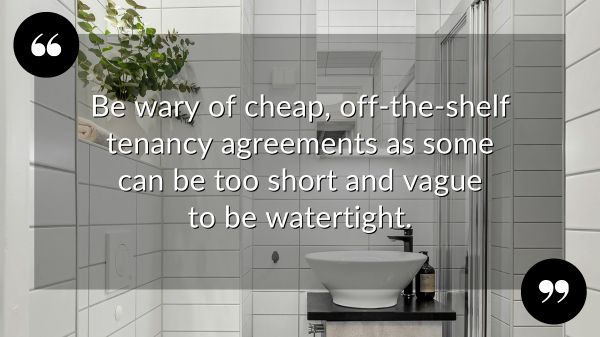
PERFECT PAPERWORK AND PROCEDURES
There’s unquestionably plenty of paperwork and process to get right when setting up a tenancy. Some is a legal requirement, and some is essential practice to cover all bases if there’s a dispute.
- Draft a comprehensive tenancy agreement, clearly outlining all terms, conditions, and responsibilities. Be wary of cheap off-the-shelf contracts, as some are too short or vague.
- Prepare a detailed written inventory and schedule of condition backed up by photographic evidence. List everything, including minor details like power sockets and light switches.
- Supply your tenant with the latest 'How to Rent' guide in England, or the Private Residential Tenancy: Information for Tenants guide in Scotland, before the tenancy starts.
- Also include copies of the current and valid Energy Performance Certificate and the safety certificates for the gas and electrical installations, again, before your tenant moves in.
- Protect the security deposit in a government-approved scheme, and provide your tenant with details of the scheme provider, within 30 days of receipt.
Meticulous paperwork ensures every aspect of your tenancy is legally watertight, protecting your interests, saving you from fines, and providing a clear framework for you and your tenant.
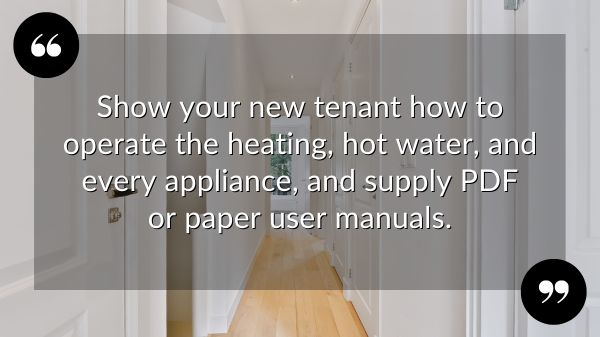
SMOOTH CHECK-INS AND REGULAR CHECK-UPS
The day your tenant moves in sets the tone for the entire tenancy, so a smooth handover is crucial for a positive start that creates good vibes going forward, rather than beginning on a note of mistrust or disappointment.
- Review the inventory and get the tenant to sign every page. Remember to include meter readings and the number of keys you're handing over, along with replacement costs.
- Demonstrate how the heating, hot water, and appliances work. Supply user manuals in PDF or paper form, and give your tenant a contact number for emergencies.
- Check any smoke alarms and carbon monoxide detectors on the day, and provide written confirmation of the test, including whether they all pass or if any servicing is required.
The main takeaway with check-in day is that you simply can’t go into too much detail. Harmony comes from clarity and encourages your tenant to treat your property with the care it deserves.
Are you setting up a tenancy soon?
We’d love to show you our formula for setting up a tenancy properly with thorough preparation, strict legal compliance and clear communication - perhaps we could even do the same for you.
Call us on 01722 580059 or email us at info@piccoloproperty.co.uk for expert, tailored advice and to see how we help many landlords in the Wilton and Salisbury area to enjoy the rewards of owning successful rental homes.




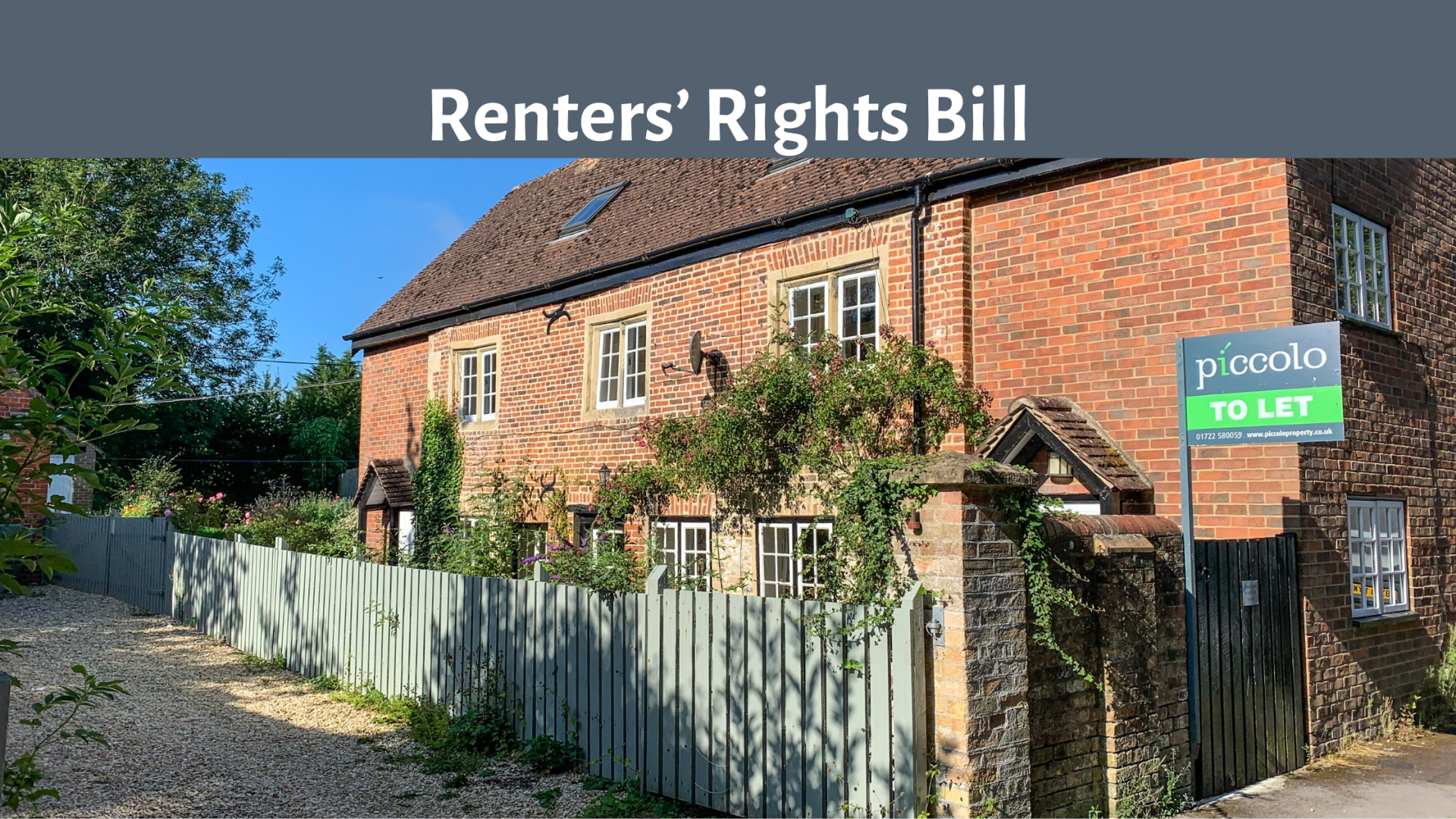
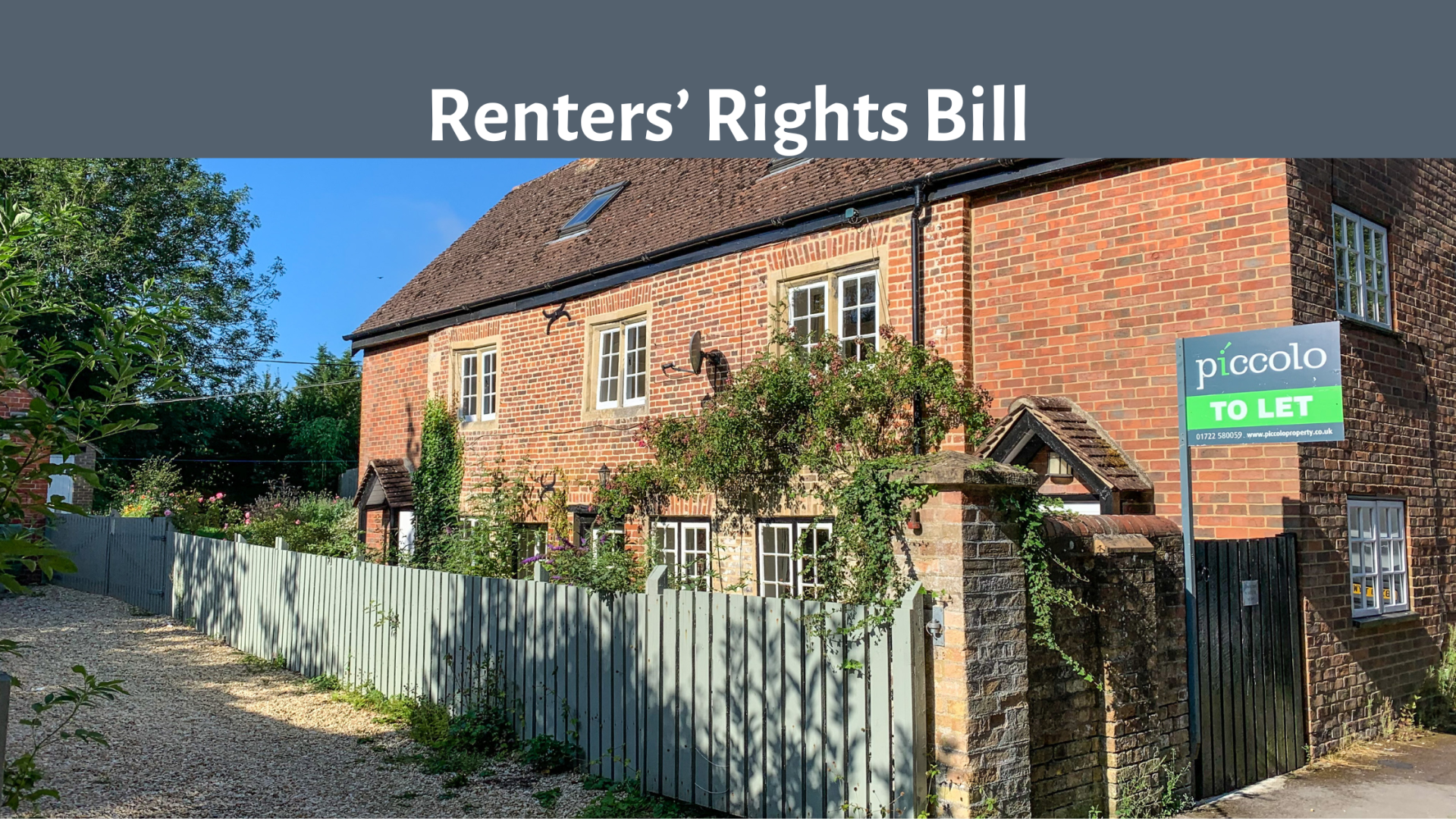
Share this with
Email
Facebook
Messenger
Twitter
Pinterest
LinkedIn
Copy this link